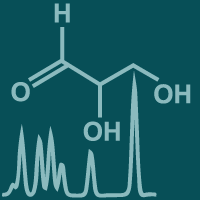Topic Menu
► Topic MenuTopic Editors



Biomarker Development and Application

Topic Information
Dear Colleagues,
Biomarkers are critical to the precise disease diagnosis, rational design of medical therapeutics, drug discovery and development, etc. For biomarkers to assume their rightful role, information related to the mechanism of disease progression, strategies for therapeutic intervention, requirements for biomarker selection and validation, and validation and application of biomarker assay methods are needed. This Special Issue aims to give an overview of the latest advances in biomarker detection and application. Potential topics include but are not limited to:
- biomarker selection and validation
- biomarker assay
- biomarker validation and application
Dr. Sheng Cai
Dr. Linghui Qian
Prof. Dr. Su Zeng
Prof. Dr. Xin Su
Topic Editors
Keywords
- biomarker selection
- biomarker assay
- biomarker application
Participating Journals
| Journal Name | Impact Factor | CiteScore | Launched Year | First Decision (median) | APC |
|---|---|---|---|---|---|

Biomedicines
|
3.9 | 5.2 | 2013 | 15.3 Days | CHF 2600 |

Cancers
|
4.5 | 8.0 | 2009 | 16.3 Days | CHF 2900 |

Diagnostics
|
3.0 | 4.7 | 2011 | 20.5 Days | CHF 2600 |

Journal of Clinical Medicine
|
3.0 | 5.7 | 2012 | 17.3 Days | CHF 2600 |

Metabolites
|
3.4 | 5.7 | 2011 | 13.9 Days | CHF 2700 |

MDPI Topics is cooperating with Preprints.org and has built a direct connection between MDPI journals and Preprints.org. Authors are encouraged to enjoy the benefits by posting a preprint at Preprints.org prior to publication:
- Immediately share your ideas ahead of publication and establish your research priority;
- Protect your idea from being stolen with this time-stamped preprint article;
- Enhance the exposure and impact of your research;
- Receive feedback from your peers in advance;
- Have it indexed in Web of Science (Preprint Citation Index), Google Scholar, Crossref, SHARE, PrePubMed, Scilit and Europe PMC.


